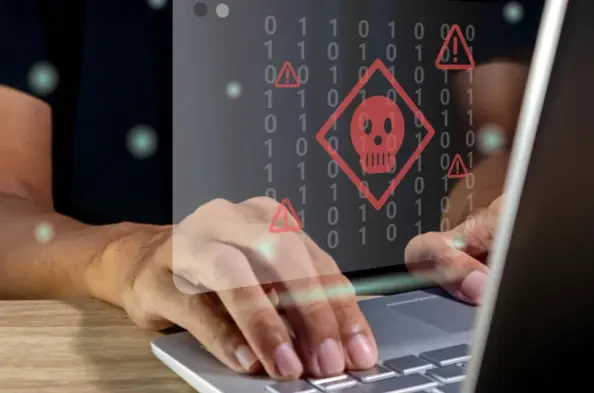Industries reliant on refined control systems continue to face incessant cybersecurity threats, especially with critical infrastructure at risk. With the continual evolution of these threats, the stakes have never been higher for industries like energy, manufacturing, and transportation. Central to the response to these challenges are sector leaders like Siemens, Schneider Electric, and Phoenix Contact. Each entity contributes a unique strategy in mitigating threats through effective advisories and patches. This article explores the varying strategies these firms employ, examining insights from experts who provide valuable context on the importance and implementation of these security measures.
Evolving Threats in ICS Cybersecurity
Experts in cybersecurity acknowledge that industrial control systems (ICS) are under an increasing barrage of sophisticated attacks. These threats pose significant risks to critical infrastructure, driving the need for robust cybersecurity frameworks. The industry has responded urgently, acknowledging the potentially devastating impacts of security breaches on infrastructure systems.
Efforts to confront these issues are multi-faceted. They involve not only addressing immediate vulnerabilities but also implementing long-term strategies to predict and mitigate future cyber threats. Key players like Siemens, Schneider Electric, and Phoenix Contact lead initiatives to bolster defenses against these vulnerabilities, working toward enhancing system reliability and security.
Siemens’ Approach: Tackling Authentication Bypass Risks
Siemens has rolled out strategic initiatives targeting a wide array of cybersecurity challenges, emphasizing the need for a balance between efficiency and security. The firm has issued 18 new advisories, addressing critical vulnerabilities in industrial PCs and Ruggedcom devices that, if exploited, can allow unauthenticated access. Industry leaders recognize the importance of Siemens’ focus on authentication bypass risks as part of their concerted efforts to maintain system integrity while ensuring operational functionality.
A rigorous debate exists among experts regarding the optimal balance between ensuring stringent security measures and preserving operational efficiency. Siemens engages this debate by prioritizing both areas through a strategic framework that reflects their commitment to safeguarding their client’s operational technology environments without compromising efficiency.
Resilient Strategies by Schneider Electric
Schneider Electric’s countermeasures against vulnerabilities reflect a commitment to resilience. The company has responded to legacy issues such as a Silicon Labs bootloader flaw and significant vulnerabilities like the Erlang/OTP SSH risk in Galaxy UPS systems. These efforts showcase Schneider’s acknowledgment of both present and legacy system vulnerabilities, ensuring they are adequately patched and managed.
Real-world implications of Schneider’s strategies are evident in case studies, which illustrate improved security outcomes in previously vulnerable systems. Some experts argue that the company’s comprehensive approach to resilience enhances system integrity, making important strides against unauthorized access and misuse.
Phoenix Contact’s Innovations: Sustaining Network Integrity
Phoenix Contact has revealed a concerning DoS vulnerability in their bus couplers, drawing attention to the ramifications such network disruptions can have on broader industrial operations. Experts suggest this vulnerability underscores the constant advancement required in cybersecurity measures and strategies. The company’s response provides a useful template for how targeted intervention can mitigate severe risks to network integrity.
Additionally, Phoenix Contact’s efforts are part of larger emerging trends, highlighting the importance of regional differences in cybersecurity practices. Experts discuss how these distinct elements influence and sometimes hinder the effectiveness of global security strategies. Nonetheless, technological evolution within this space is rapidly disrupting traditional approaches, prompting a reevaluation of best practices and standards in the field.
Collaborative Dynamics in ICS Security
Collaboration in industrial cybersecurity is paramount. Companies and governmental cybersecurity entities work together to address pervasive vulnerabilities. Analysts note the effectiveness of such cooperative efforts, showcasing the industry’s commitment to advancing security postures.
While varied strategies and priorities are evident among industry players, there remains a shared goal of ensuring robust defense mechanisms. Comparisons across companies reveal different focal points and methods, providing a wealth of insights regarding the industry’s future directions and potential regulatory influences.
Insights and Recommendations for ICS Security
Drawing from various expert insights, several strategies stand out in addressing ICS vulnerabilities. Experts emphasize the importance of continuous monitoring, employing threat intelligence systems, and implementing comprehensive incident response protocols. Best practices also suggest regular software updates and proactive vulnerability management as vital components of effective security strategies.
To deepen understanding and skills in securing operational technology environments, professionals are encouraged to engage in ongoing education and adapt evolving methodologies, equipping them with tools necessary for anticipation and response to emerging threats.
Sustaining Momentum in the Progress of ICS Security
The progress made in cybersecurity for ICS systems demands steadfast momentum. Industry stakeholders continue emphasizing proactive measures and vigilance as key elements in maintaining secure environments. The enduring collaboration of industry leaders and agencies guides future efforts while fortifying the global cybersecurity landscape.
Looking forward, the integration of innovative technologies promises to revolutionize traditional security methods, enhancing resilience and preparedness. Continued investment and commitment remain essential in advancing these initiatives, marking significant steps toward a more secure industrial future.






